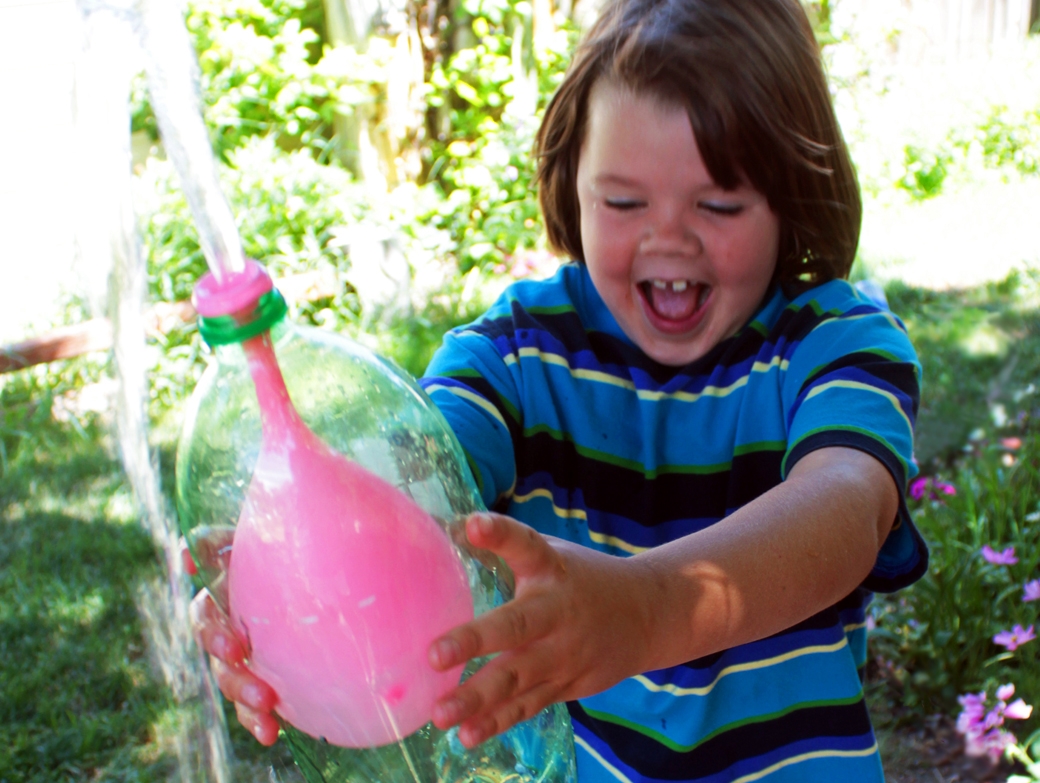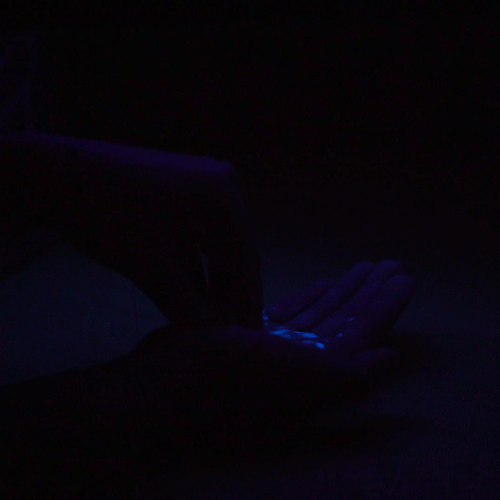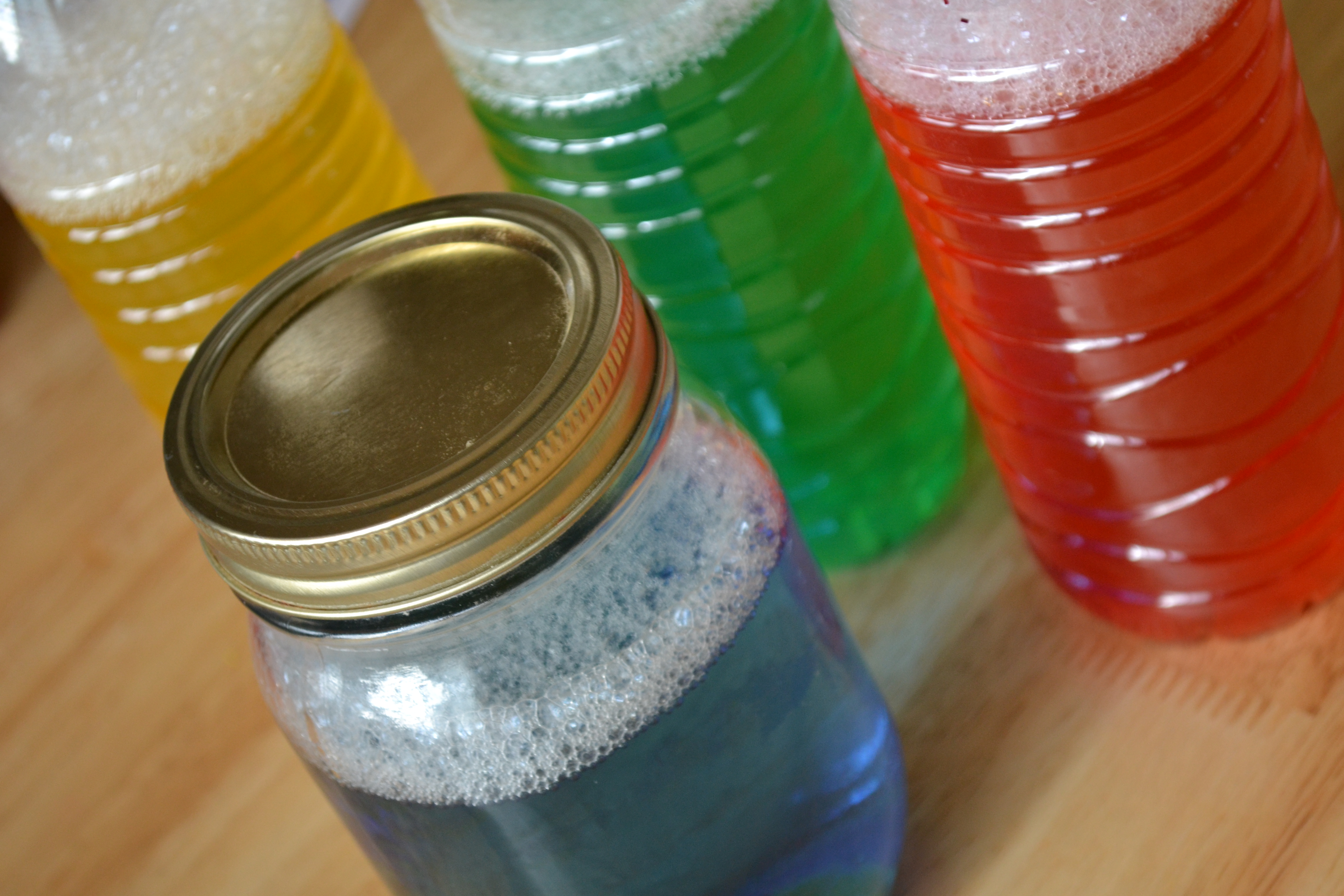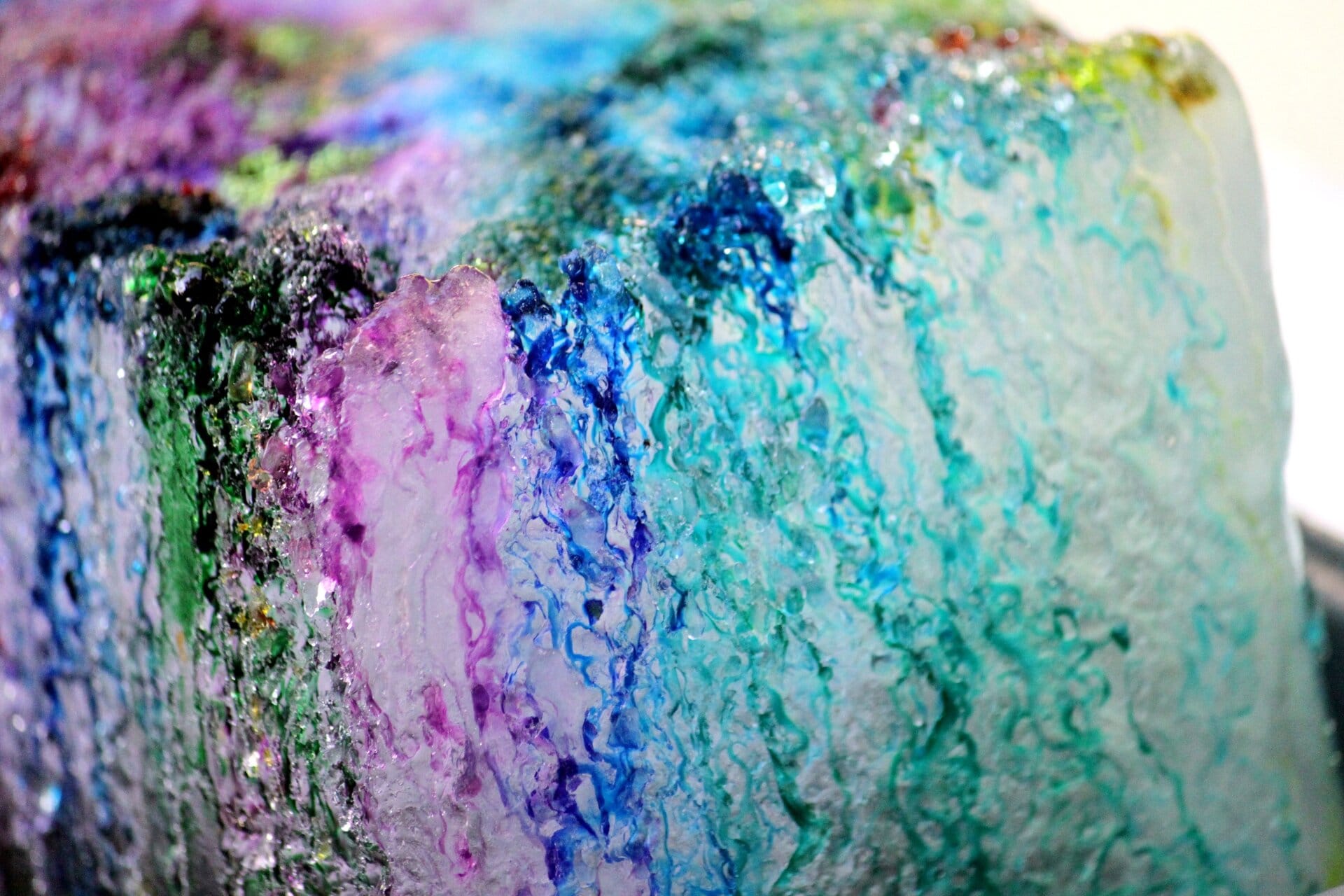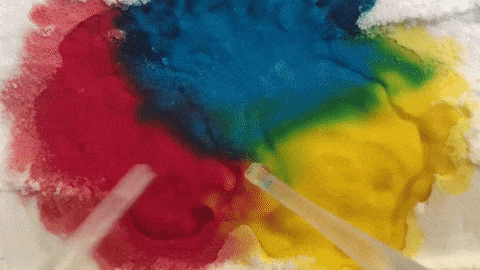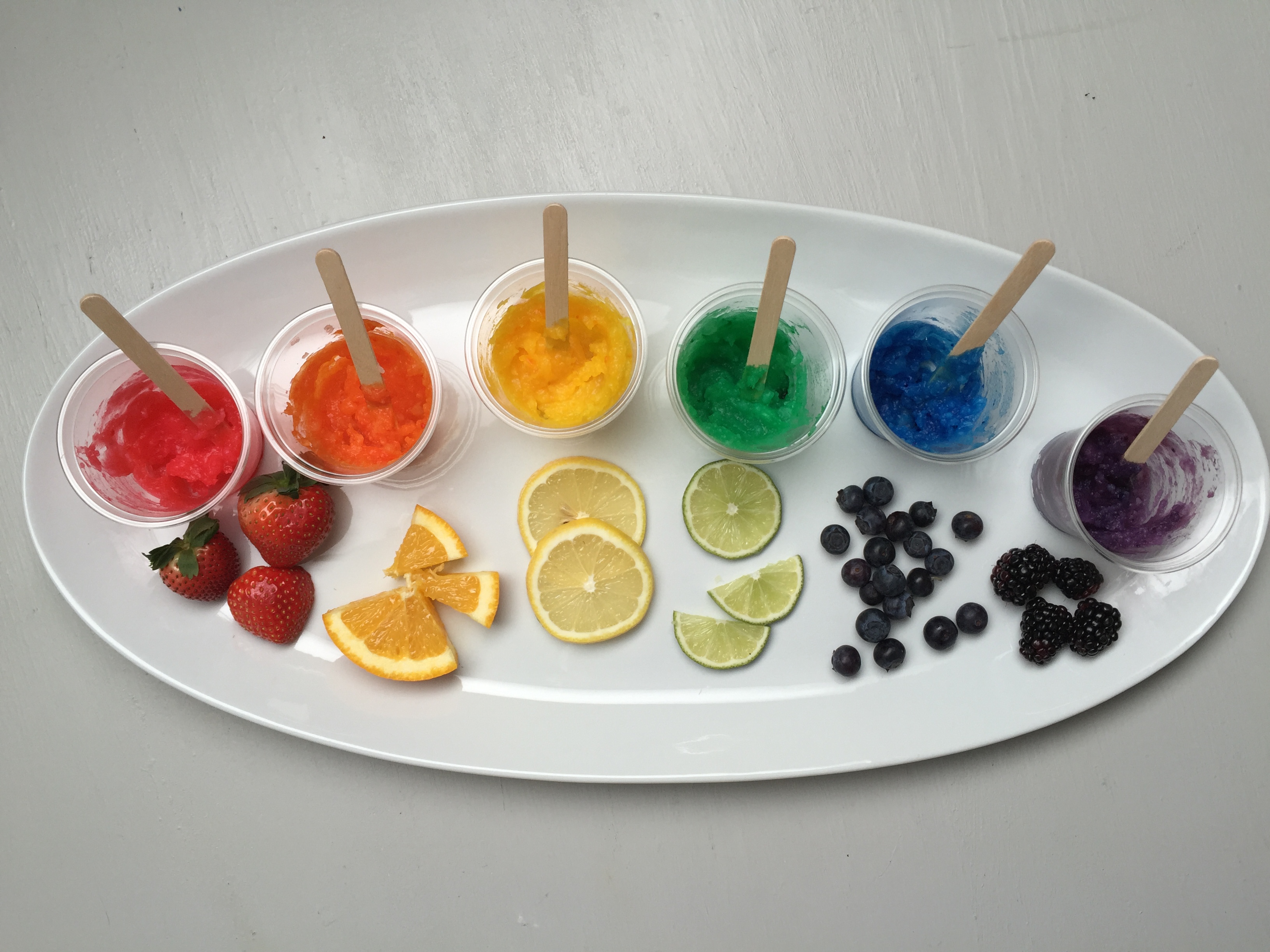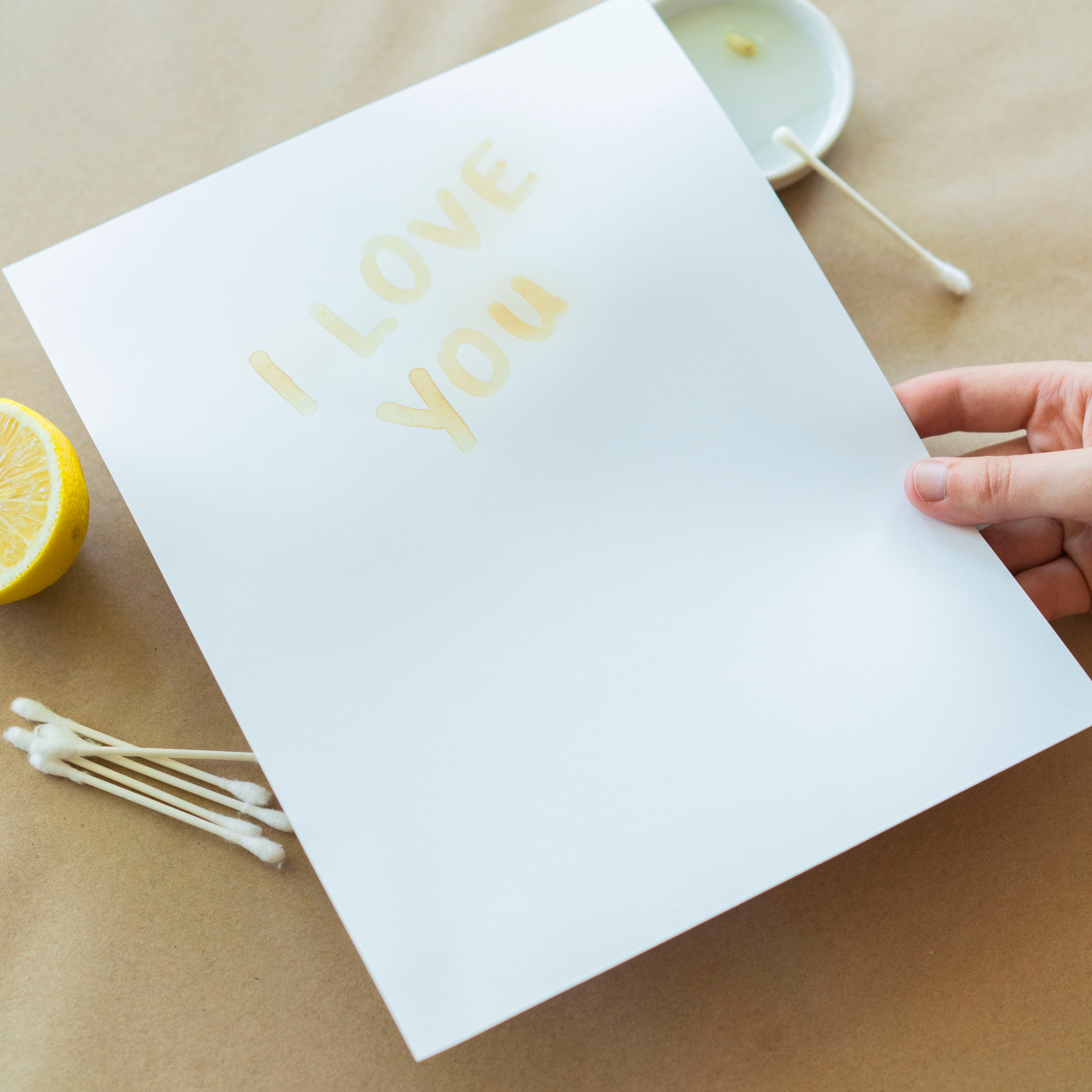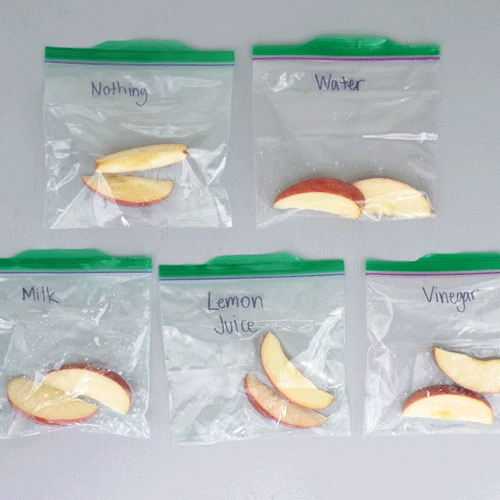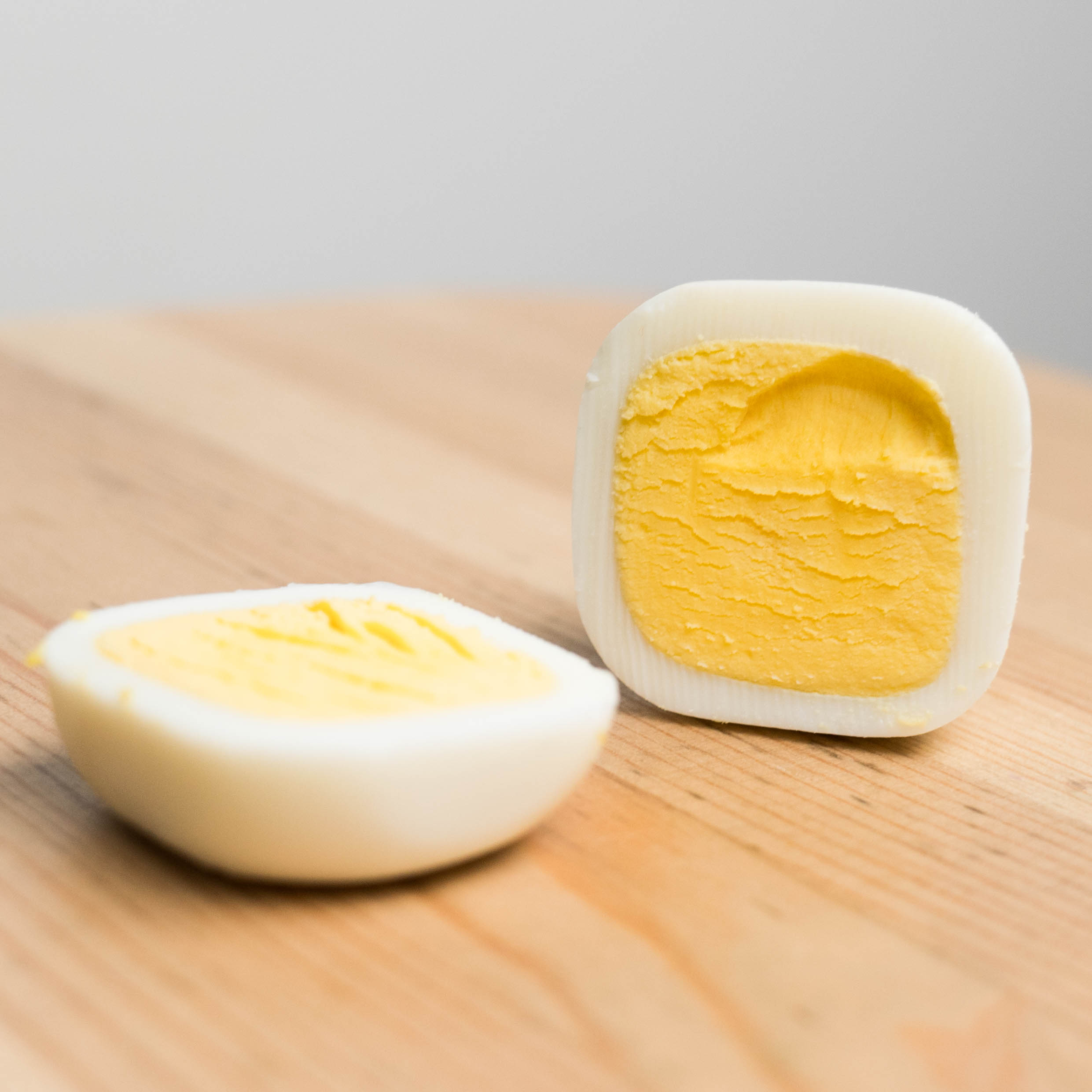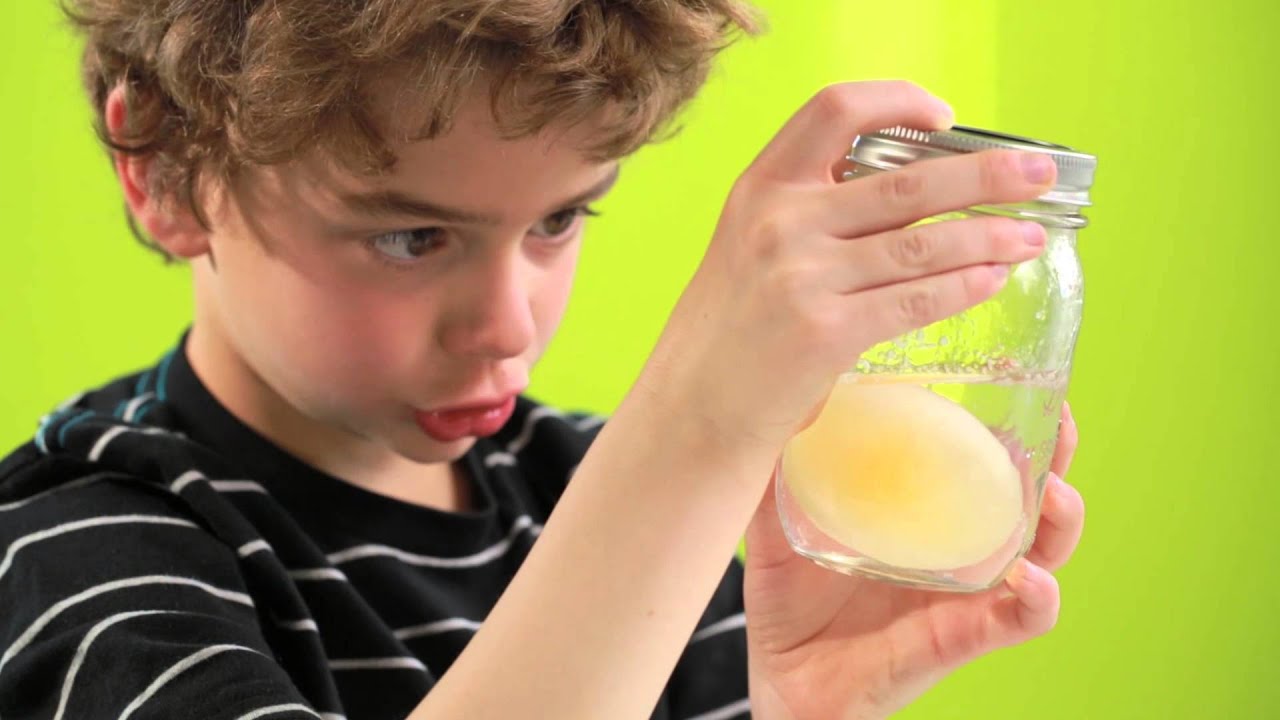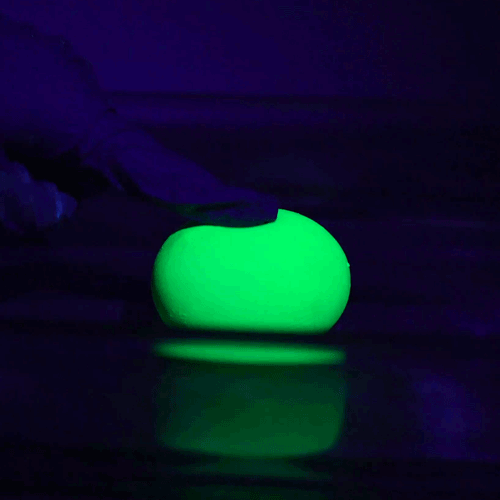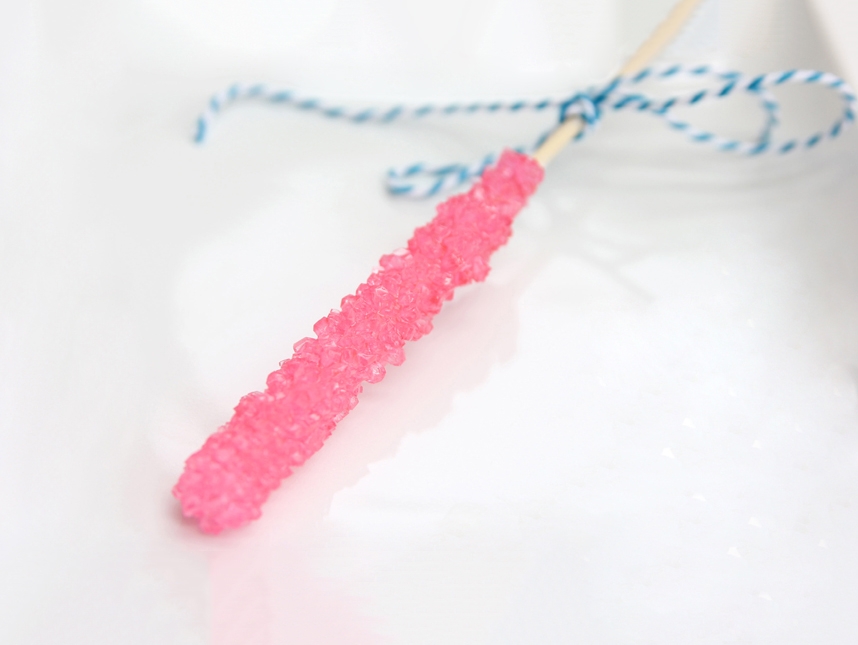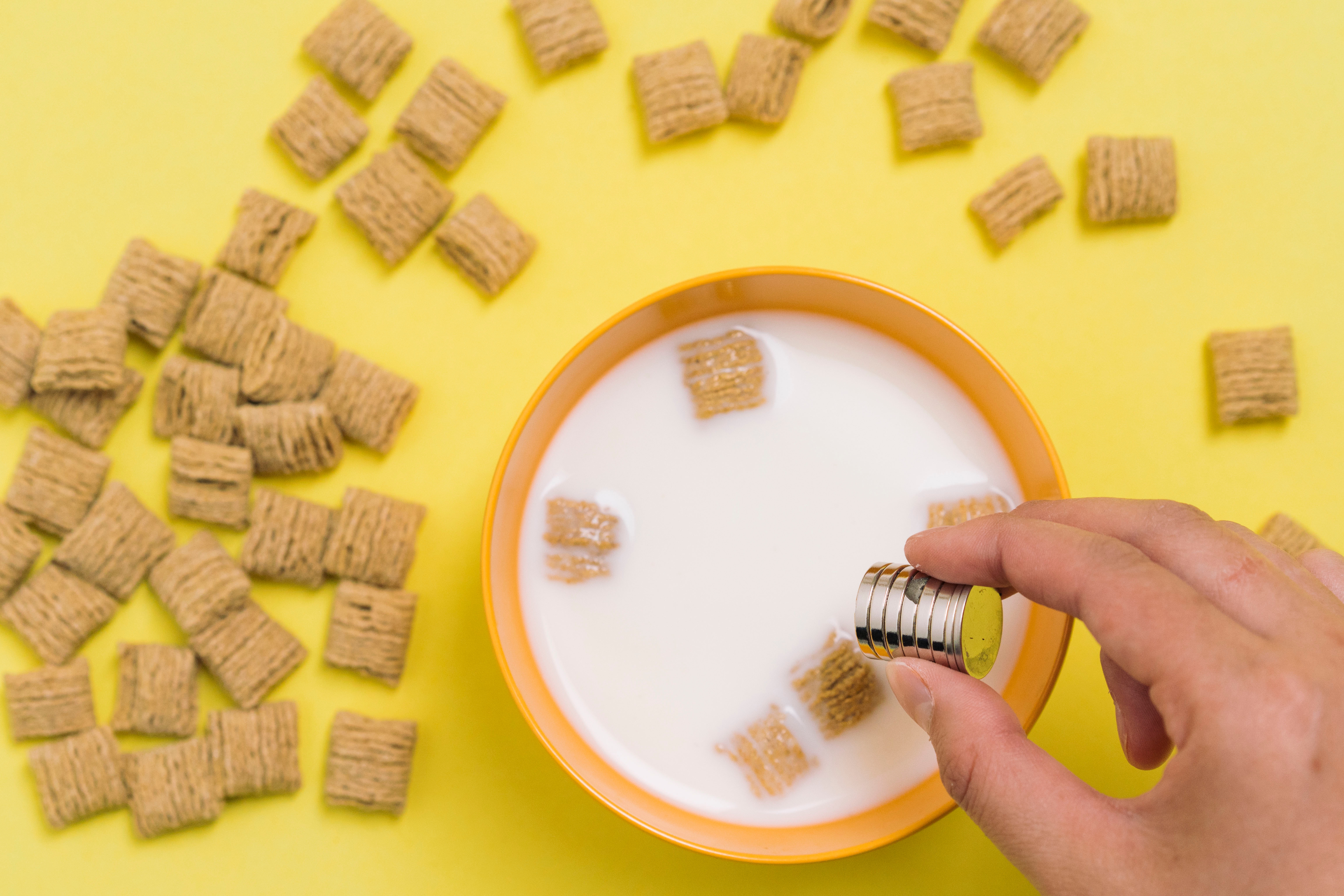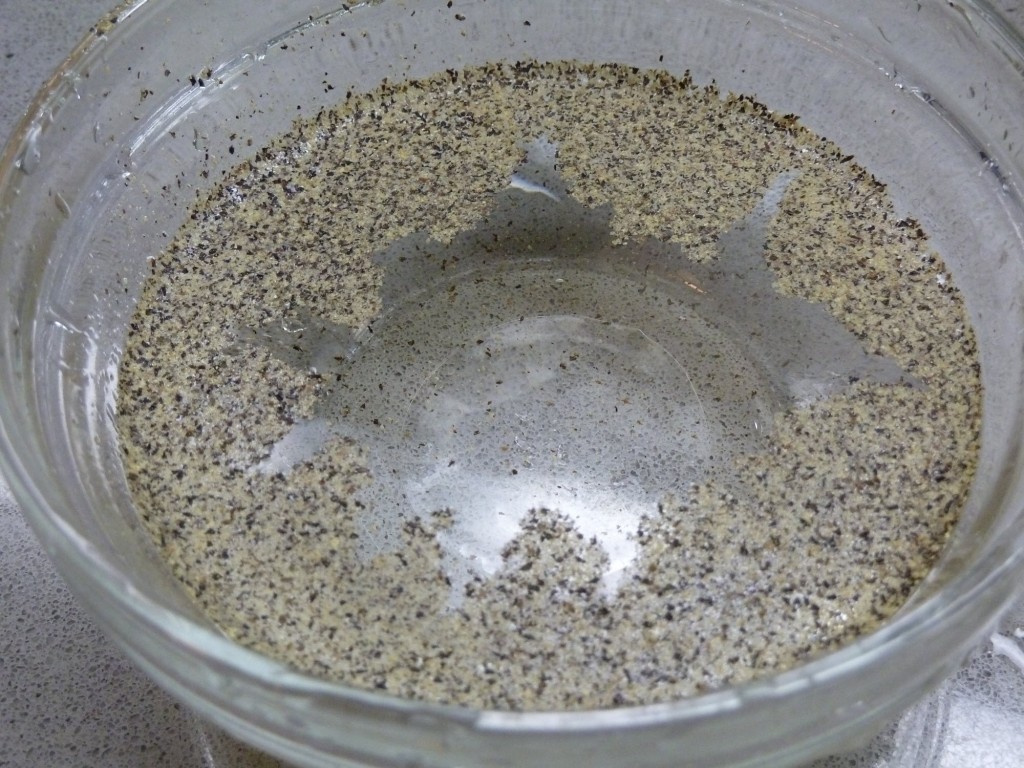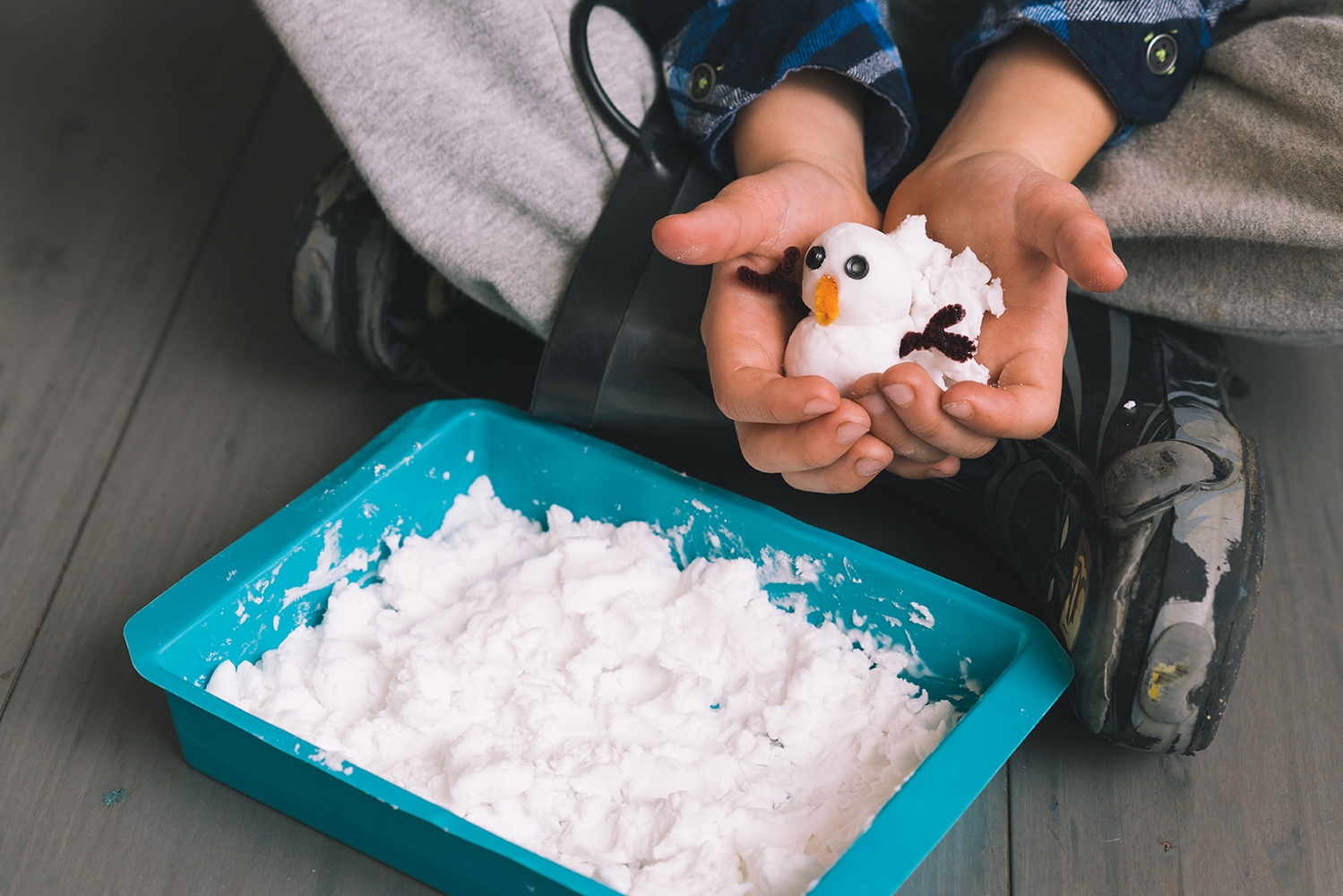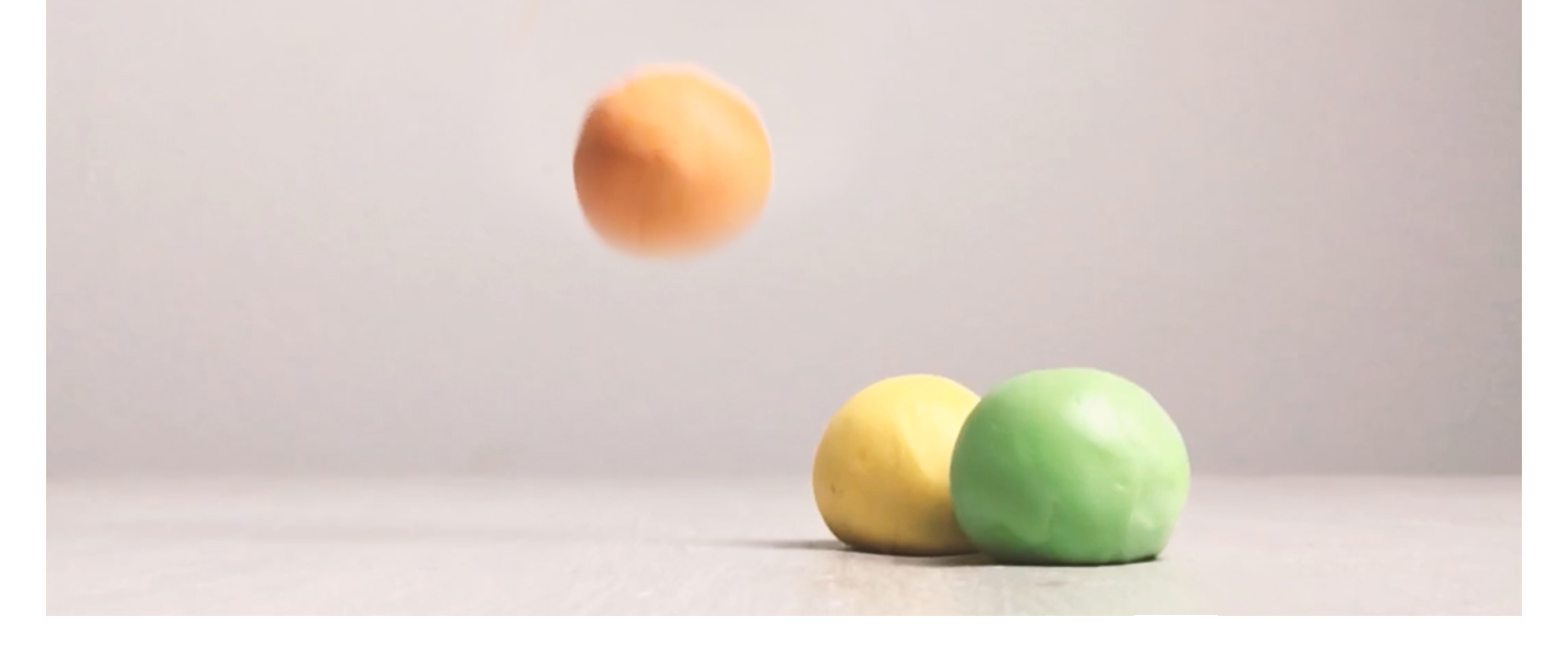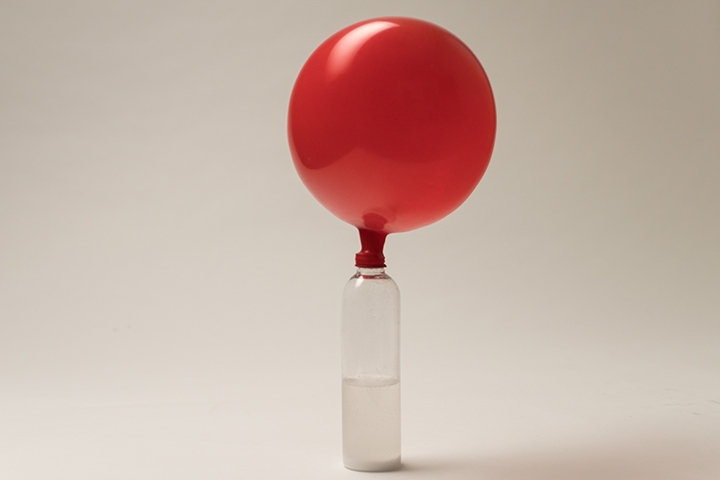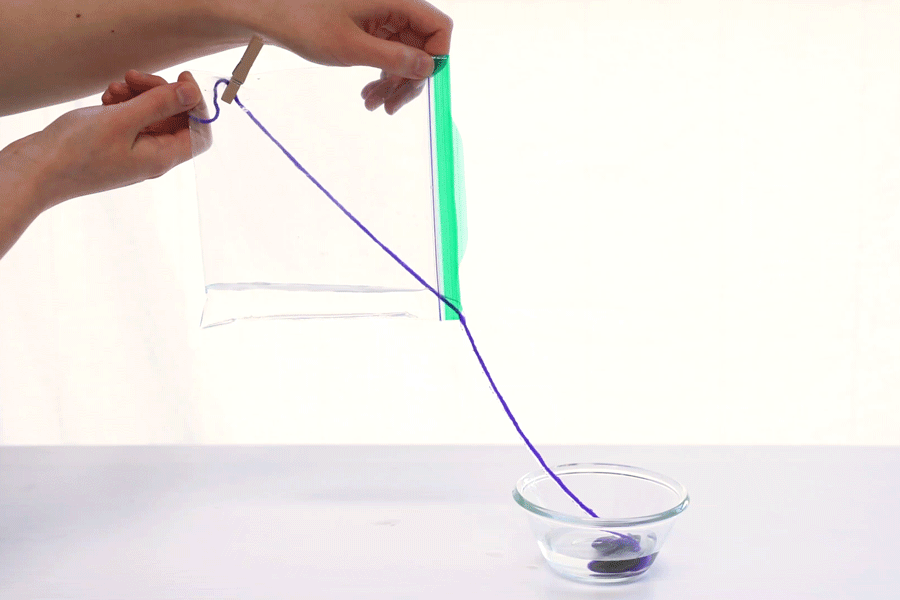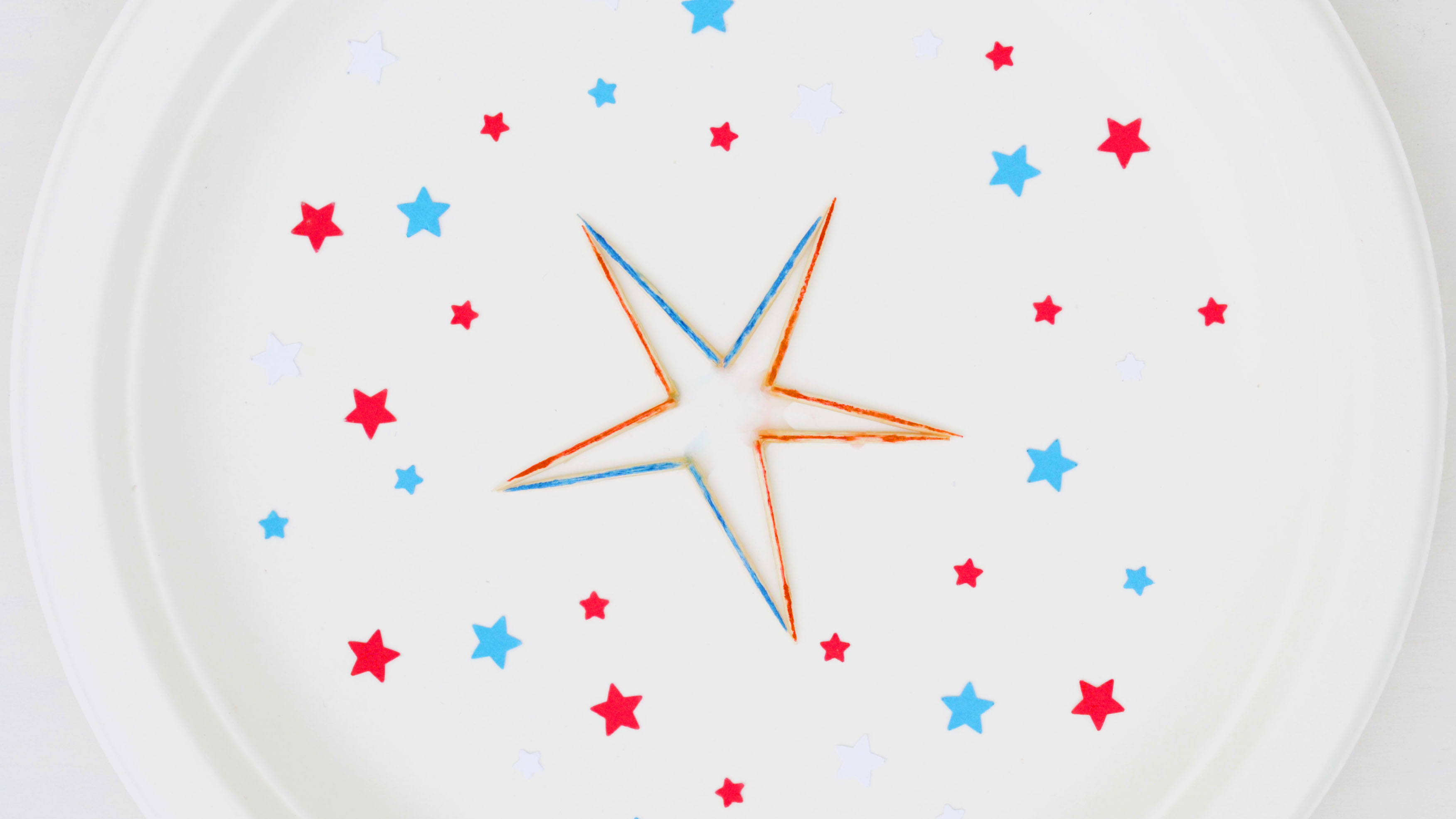- Cornstarch Slime
(Ages 5-11)
If you’ve ever wondered why it might be hard to get out of quicksand, it’s because it can act like both a liquid and a solid. Cornstarch slime is a fun substance that does this too! When a substance like this has properties of both liquids and solids, they are called non-Newtonian fluids, which you’ll learn more about in this experiment. You’ll also explore what interactions make it go from one state to another. When you slowly press your fingers into cornstarch slime —stored in a Ziploc bag —it’ll feel like a liquid. But when you quickly press your fingers into it, it becomes as hard as a rock! Why do you think that is?
Want more slimey science fun without the hassle of gathering materials? Explore the science of thermochromism with Color Changing Slime from the KiwiCo Store!
- Water Volcano In A Bottle
(Ages 3-8)
Try out this two-part water experiment! First--why can't you blow up a balloon in a bottle? And, second--what happens when you do...and then fill it with water?
- Glowing Oobleck
(Ages 5-16)
Discover non-newtonian fluids (substances that act as both a liquid and a solid) and liquids that glow under black light with this messy, but delightful activity!
Have you ever hit some water with a hammer? We’re not sure why you would have, but if you can imagine doing that, you can also imagine that the hammer would make a splash as it goes right into the water. The water doesn’t really push back on the hammer. But what if it did? What if you hit the water, and it stopped the hammer?
The mixture you’re going to make in this activity does just that. Oobleck is a type of mixture called a non-Newtonian fluid. If you push hard on it (no need to use hammers for this part), it hardens up and pushes back against you. If you push lightly on the oobleck, though, it stays liquidy and your hand will easily go into it.
- Tornado Jar
(Ages 3-8)
My silly scientists had a blast with this hands-on experiment! We used mason jars and plastic water bottles to make our own mini tornadoes. Then they spent the afternoon spinning their bottles and watching their tornadoes twirl! They fascinated everyone from our tiny tots to my big 4th graders!
- Milk Swirl Experiment
(Ages 3-11)
See how a drop of soap can create an explosion of color with this easy experiment!
Want to learn more about chemistry without the hassle of gathering materials? Explore 11 fun chemistry experiments with a Chemistry Play Lab from the KiwiCo Store!
Investigate the scientific process with ice! Our Kiwi Crate lab book has six awesome and easy experiments that will keep your kids busy while you get work done. The best part is you can download or print out all the activities!
- Fizzing Colors
(Ages 3-12)
Turn your kitchen into a chemistry lab with this simple science experiment! You only need three ingredients: baking soda, food coloring, and vinegar.
Want to learn more about chemistry without the hassle of gathering materials? Explore 11 fun chemistry experiments with a Chemistry Play Lab from the KiwiCo Store!
- Frozen Color Mixing
(Ages 3-7)
Primary colors (red, blue, and yellow) are the source of all other colors. Secondary colors (green, purple, and orange) are created when two primary colors mix. If you freeze up colored ice cubes, you can experiment with color mixing as they melt. Combine cubes to make secondary colors, and if you’re feeling really creative, see if you can make tertiary colors (yellow-orange, red-orange, red-violet, blue-violet, blue-green, and yellow-green)! Heads up: This project will dye your little ones’ hands. We recommend using gloves or putting the colored ice cubes in plastic bags for mixing.
- Color Mixing with Slime
(Ages 3-8)
When we think of slime, we think of a super-fun gooey experience. But with a handy bag, we can create an awesome rainbow project that lets us enjoy slime and learn at the same time! In this experiment, we make slime in the three primary colors (red, yellow, and blue) and layer them up to produce secondary colors (orange, purple, and green).
- Edible Paint
(Ages 3-16)
In our household, we're not afraid to get a little messy, after all, it's inevitable with two little ones running around! So we loved this idea of making homemade finger paint using simple ingredients from the pantry. It was great to know that the paints were non-toxic in case any wandering fingers made their way into mouths. We had so much fun making and playing with the vibrant colors. We will definitely be doing this project again!
- Gummy Bear Science Project
(Ages 5-11)
It is time for these little bears to grow up...and out with this gummy bear science project! Watch as gummy bears grow and shrink in different liquids in this kid-friendly experiment. This project is open for exploration and discovery, so kick things off by asking your child what they will happen to a gummy bear in water. Will it dissolve? Will it shrink or grow? Will it fall apart? How long will it take? Don’t forget to grab a notebook to write down their ideas so you can compare what they predicted with what actually happens! You’ll start to see results in just a few hours, and you’ll definitely see big changes in size in just a day.
Want to explore more kitchen science experiments? Explore the tastier side of learning with Science of Cooking: Ice Cream from the KiwiCo Store!
- Invisible Ink with Lemon Juice
(Ages 5-16)
Write secret messages to your friends and family and then let them decode it with any source of heat - like a candle or an incandescent light bulb!
Want to learn more about chemistry without the hassle of gathering materials? Explore the science of thermochromism with Color Changing Slime from the KiwiCo Store!
- Hopping Grains
(Ages 3-11)
Learn how to make a handful of grains hop and dance with this simple kitchen experiment! Add in a splash of food coloring to create a cup that is mesmerizing to watch and enjoy.
- Apple Oxidation Experiment
(Ages 3-4)
Have you ever noticed that if you slice an apple in the morning, it turns brown by lunch? This is actually a chemical reaction at work! In this experiment, you’ll learn more about how the oxygen in the air around us causes this reaction (also known as oxidation). With a little help from Ziploc bags, test different liquids to see if you can figure out a way to keep apples fresh from morning to noon.
Want to learn more about chemistry without the hassle of gathering materials? Explore 11 fun chemistry experiments with a Chemistry Play Lab from the KiwiCo Store!
- Square Egg
(Ages 5-16)
Is a square egg possible? Not in nature - but you can re-shape a hard-boiled egg in just a few easy steps!
Discover everything that eggs have to offer with Eggsperiments from the KiwiCo Store! Use the scientific method with a series of egg-based experiments that explore chemistry, physics, and biology.
- Egg in Vinegar Experiment
(Ages 5-11)
Want to see a chemical reaction in action? With this egg in vinegar experiment, we observed and followed a regular egg through a transformation to become a bouncy egg. You can too with just a few repurposed ingredients you may have around the house for Easter!
This experiment allows you to see how two common household materials react — eggshell and vinegar. When these materials come in contact, a (safe) chemical reaction takes place and creates new compounds. This easy experiment is great for children to do on their own, and fun to observe how the egg changes over time.
Want to explore more kitchen science experiments? Explore the tastier side of learning with Science of Cooking: Ice Cream from the KiwiCo Store!
- Glowing Bouncy Egg
(Ages 5-16)
Can you bounce an egg without breaking its shell? Try this simple chemistry experiment and make a large, luminescent rubbery egg.
- Rock Candy Experiment
(Ages 5-11)
Did you know you can grow your own sugar crystals at home? In this experiment you'll learn about crystal growing science while making edible sweet treats.
- Celery Experiment
(Ages 3-8)
Has your child ever wondered how plants get water from their roots all the way to their leaves? This simple celery experiment shows how colored water travels up a celery stalk!
Looking for more kitchen learning projects to do with your young scientist? Roll and stamp your way to early math exploration with a Fun Dough Pasta Maker from the KiwiCo Store!
- Magnetic Cereal
(Ages 5-8)
Pull a couple of cereal boxes from the shelf and test their iron content with this simple experiment. It's fun to see your breakfast whiz across the surface of milk using a magnet!
Want to explore more kitchen science experiments? Explore the tastier side of learning with Science of Cooking: Ice Cream from the KiwiCo Store!
- Spicy Pepper Science Trick
(Ages 5-8)
Try this spicy science trick at home!
- Sensory Lab
(Ages 5-16)
My son has always had an interest for the kitchen. Whether I'm cooking dinner or baking cookies, you can be sure that he'll come running when he gets a whiff of something delicious. I loved the idea of encouraging his curiosity in the kitchen and introducing him to some herbs and spices we use in our everyday cooking. We created our very own mini sensory lab and my son loved exploring all the different ingredients we use in our home cooked meals!
- Bubble Bottle
(Ages 3-11)
Turn an empty water bottle and a sock into a gazillion-bubble blower! Then add some drops of food coloring to create rainbow-colored bubble snakes.
- Underwater Fireworks
(Ages 5-11)
With your kitchen as your lab and baking supplies as your ingredients, create your own underwater firework spectacular! These underwater fireworks go off because of density. Density means how much something weighs for a given volume of it. Denser things like iron and stone sink. Less dense things like wood and rubber float.
In this experiment, you use four different liquids with four different densities: oil, water, food coloring, and saltwater. The oil sits on top of the water because it’s less dense than water. The water sits on top of the saltwater for the same reason. Food coloring is denser than oil and a little bit denser than water, but it isn’t as dense as saltwater. When the drops of food coloring hit the dense saltwater, they disperse like exploding fireworks!
Eager to learn more about the world around us? Explore the science of volcanic eruptions with a Geologist Starter Kit from the KiwiCo Store!
- Instant Sensory Snow
(Ages 3-8)
In our part of California, we don't get any snow. While we try to make at least one trip to Tahoe every winter for a weekend of skiing and sledding, sometimes it's still not enough snow to satisfy my kids.
To recreate some of that fun winter magic, we decided to make our own snow! It was a great way to have fun with sensory play.
Looking for more crafts to decorate for the holidays? Create awesome decorations and have hands-on fun with a Rainbow Air Dry Clay set from the KiwiCo Store!
- Bouncy Ball
(Ages 5-16)
Did you know you can make your own bouncy balls at home? You can with this project that's also a quick chemistry exploration in polymers. You'll be jumping for joy right alongside your super awesome bouncy balls at the end of this experiment.
- Baking Soda-Powered Boat
(Ages 7-16)
Fizz, fizz, zoom! This baking soda experiment boat is easy to build and fun to race.
Discover more about the science of pressure with a Bottle Rocket kit from the KiwiCo Store! Assemble a launcher, rocket, funnel, and launch mixture to experience some extremely fizzy fun.
- Magic Inflating Balloons
(Ages 5-16)
Can you make a balloon inflate without using air? Sure you can! You just need to make carbon dioxide gas, which is easier than you think. When your vinegar and baking soda touch, get ready to watch the bubbly reaction!
Want to explore more hands-on science experiments without the hassle of gathering materials? Learn about chemistry and design out-of-this-world bath bombs with Planet Bath Bombs from the KiwiCo Store!
- Egghead Plants
(Ages 3-11)
These little eggheads are an adorable project! Just plant the grass seeds and watch the hair grow. You can even use these eggheads as seed-starter pots because they are biodegradable and full of calcium for your plants!
- Water Flow Experiment in a Bag
(Ages 5-11)
If you wanted to pour water out of a Ziploc® brand bag into a bowl, where would you put the bowl? Directly under the opening of the bag, of course. (Thanks, gravity!) But if you had a piece of string, you could pour the water from a few inches off to the side of the bowl, over the table, and still get the water to flow into the bowl —all thanks to the adhesive and cohesive properties of water.
- Expanding Star
(Ages 1-8)
Show off your patriotic spirit with this simple yet satisfying star project. Watch as five broken toothpicks transform their shape with just a few drops of water.
- Sink or Float?
(Ages 3-8)
Will your toy sink or float? This experiment is fun for all ages.
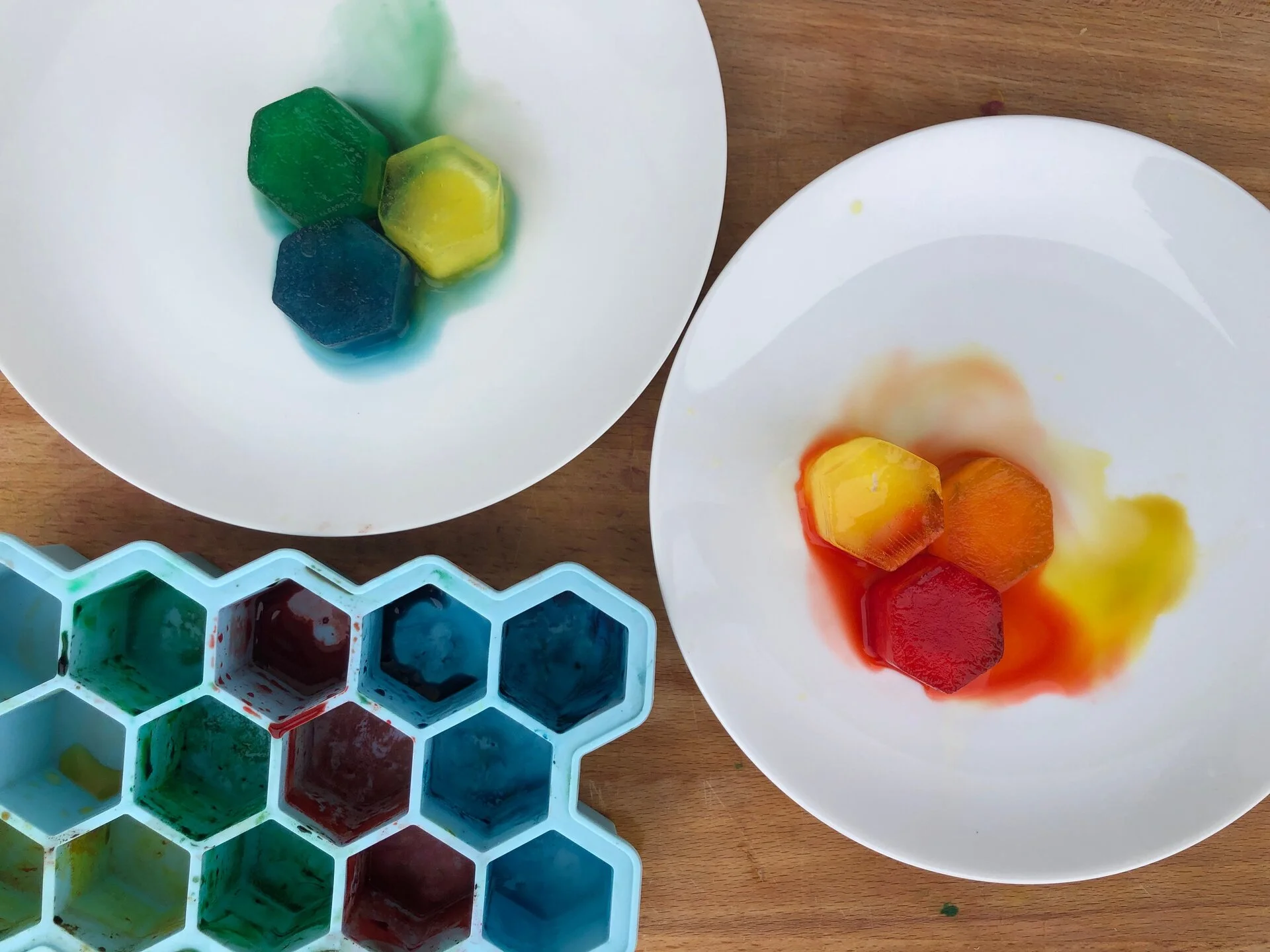
Kitchen Science Experiments for Kids Ages 3 to 8
Keep your kids’ brains busy and inspire innovation with simple STEAM projects you can do with the materials you have at home!

